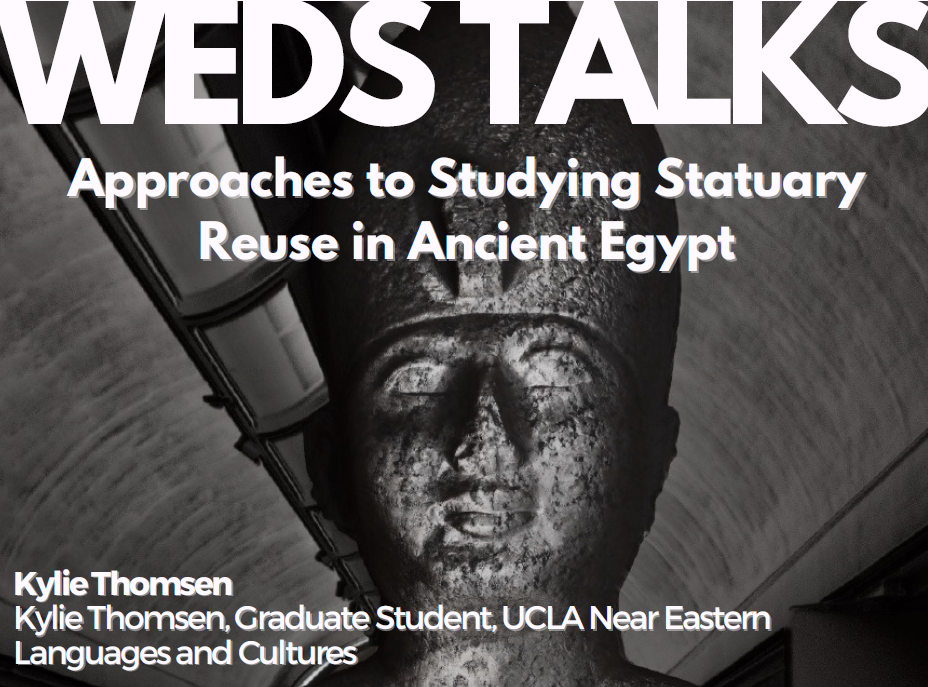Event: WEDS TALKS: Approaches to Studying Statuary Reuse in Ancient Egypt
Event Details

ABSTACT: Statuary reuse was an episodic practice in ancient Egypt. Reuse of a statue could range from actions not obvious in the archaeological record, such as moving a statue to a secondary location by a different owner, to the transformation of a statue by modifying its inscriptions, reworking its features, or even the destruction of a larger statue to craft several smaller ones. However, depending on the extent to which the object was modified and its overall preservation, it remains difficult to systematically study, particularly over time and space. This presentation will focus on approaches to identifying the actions associated with statuary reuse in order to better analyze the object’s life history through the modifications it underwent. Through this, I aim to contribute to the understanding of the intent(s), context(s), and reception(s) of statuary reuse in ancient Egypt, as well as the technical strategies employed by the ancient craftspeople who altered these objects for their later uses.
BIO: Kylie is an Egyptology PhD candidate in the Department of Near Eastern Languages and Cultures at the University of California, Los Angeles. She received her BA in anthropology from the University of Arizona and her MA in Egyptology from Indiana University Bloomington. She is currently a researcher and graphic designer for the UCLA Coffins Project, which investigates coffin reuse in ancient Egypt during the Third Intermediate Period. Her dissertation research focuses on the documentation and contextualization of ancient Egyptian statuary reuse, including documenting statues via high-resolution photography, photogrammetry, RTI (reflectance transformation imaging), and traditional art historical methods in order to analyze the statues for signs of recarving, reinscribing, and other indicators of object reuse.


